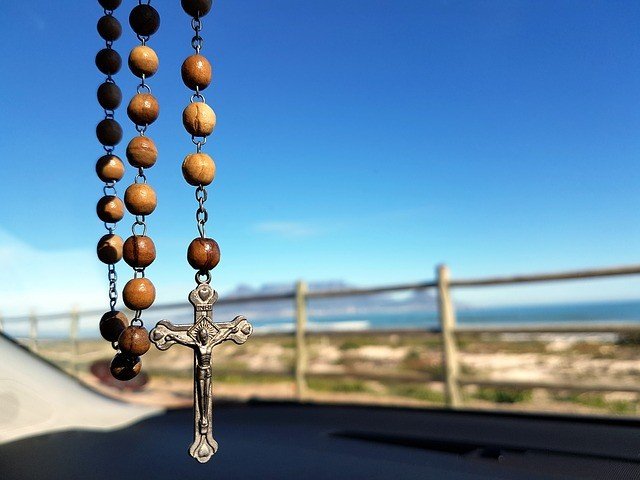How Sacred Bead Rosaries are Used in Various Spiritual Traditions
Rosaries are used in nearly every world religion, prayer beads to mark the repetition of some devotion, usually a specific prayer or mantra. Using the beads to keep track of breaths, mantras, or recitations allows those engaged in meditation to devote themselves entirely to their spiritual self, looking inward with all their awareness rather than dividing their attention between the physical necessity of counting and the spiritual necessity of quiet and calm. While some are made with beads of semiprecious stone and others with knotted rope or notched leather, they all serve the same purpose: to count prayers.
Prayer Beads in Islam and Catholicism
Prayer beads are most commonly associated with Buddhism, but Islam and Roman Catholicism have used them for centuries as well. Beads used in the Islamic religion, usually called Misbaha or Tasbih, have 99 beads, or 33 beads that are counted 3 times. The 99 beads correspond to the 99 names of God, and are used to keep count in a prayer sequence known as the “Tasbih of Fatima.” Roman Catholics use rosaries—a circle of 54 beads, with 5 additional beads hanging off as a tail, usually with a crucifix or cross attached at the end, and typically made with precious gemstones. Eastern Orthodox Christians use knotted ropes, typically absent of a crucifix. The prayer of choice may vary from person to person, but usually it is used to count recitations of the Lord’s Prayer and the Hail Mary prayer. In Buddhism, prayer beads are called mala beads, and are typically made of rosewood or sandalwood, or a sacred seed known as rudraksha. They consist of 108 beads, each bead signifying a mortal desire or fixation, and one additional bead representing gratitude and one’s inherent connection to the divine. Most often, these beads are used to count breaths in meditation, or repetitions of a certain mantra or a Buddha’s name.
Buddhist Prayer Beads
Buddhists make up roughly 8% of the world’s population; the heaviest Buddhist concentrations are in Thailand, Cambodia, and Myanmar, with a sizable population (5%) in the United States and France. There are many sects and variations of Buddhism, as there are with any religion, but the general dharma (or teaching) of Buddhism revolves around teachings attributed to the first Buddha, Siddhartha Gautama—a prince who abandoned his pleasure palace in search of the origins of suffering, and who attained Enlightenment. The word Buddha literally means “awakened one”; one who has cast off all fixations and desires, and who has escaped the cyclical existence of birth, death, and reincarnation.
A key component of Buddhism, as well as Hinduism, is meditation: the act of consciously attempting to alter the way your mind works. If fixations are inherent to human nature, then to remove fixations and become Enlightened is against our nature; and therefore, to overcome it and ascend, we must consciously clear our minds and shape them by our will and spirit, not by our innate tendencies to bicker and grumble and moan. Prayer beads are used to count breaths during a meditative session, to avoid exhausting oneself by meditating for too long, and to prevent you from concentrating overmuch on how long you’ve been meditating. Meditation refers to the quieting of a human’s chaotic mind, and the act of attuning a silent, patient mind to the greater universe; make yourself aware of your flaws, dispose of the desires that cause them, and become Enlightened. Easier said than done, and according to Buddhist traditions it can take hundreds of lifetimes to accomplish. The first rule of meditation is patience.
If you feel the call to meditation and the peace it can bring you, and you’d like some prayer beads to help you on your way, visit us here to find a set of beautiful, handcrafted beads that’s perfect for you.












